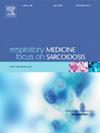Home noninvasive ventilation in pediatric patients: Does one size fit all?
IF 3.5
3区 医学
Q2 CARDIAC & CARDIOVASCULAR SYSTEMS
引用次数: 0
Abstract
Background
A French national survey showed that 1447 children were treated with long-term continuous positive airway pressure (CPAP) or noninvasive ventilation (NIV) in 2019. Data about the ventilatory settings for children are scarce. The aim of the study was to report the CPAP/NIV settings from the survey according to the patients’ age and disorders.
Methods
CPAP and NIV settings were compared between 5 age groups (<1, 1–5, 6–11, 12–17 and ≥ 18 years), and 6 disease categories (upper airway disorders; neuromuscular disease, NMD; disorder of the central nervous system; cardiorespiratory disorder; congenital bone disease, CBD; and other).
Results
Age correlated positively with constant CPAP pressure (r = 0.364, p < 0.0001), and negatively with CPAP adherence (r = −0.173, p < 0.0001). Mean age at CPAP initiation, CPAP pressures and adherence did not differ between disorders. Regarding NIV, mean inspiratory positive airway pressure (IPAP) increased with age (r = 0.152, p = 0.0001), whereas respiratory rate (RR; r = −0.593, p < 0.0001) and adherence to NIV decreased with age (r = −0.154, p = 0.0002). NIV settings were quite similar between disease categories, with the CBD group having the highest IPAP, and NMD group having the lowest expiratory positive airway pressure and RR. Adherence tended to be higher with NIV than CPAP.
Conclusions
CPAP pressure and IPAP increase with age, while settings seem quite similar between diseases. Even if our study provides some information about CPAP/NIV settings, they should always be individually adapted according to the severity of the disease.
求助全文
约1分钟内获得全文
求助全文
来源期刊

Respiratory medicine
医学-呼吸系统
CiteScore
7.50
自引率
0.00%
发文量
199
审稿时长
38 days
期刊介绍:
Respiratory Medicine is an internationally-renowned journal devoted to the rapid publication of clinically-relevant respiratory medicine research. It combines cutting-edge original research with state-of-the-art reviews dealing with all aspects of respiratory diseases and therapeutic interventions. Topics include adult and paediatric medicine, epidemiology, immunology and cell biology, physiology, occupational disorders, and the role of allergens and pollutants.
Respiratory Medicine is increasingly the journal of choice for publication of phased trial work, commenting on effectiveness, dosage and methods of action.
 求助内容:
求助内容: 应助结果提醒方式:
应助结果提醒方式:


